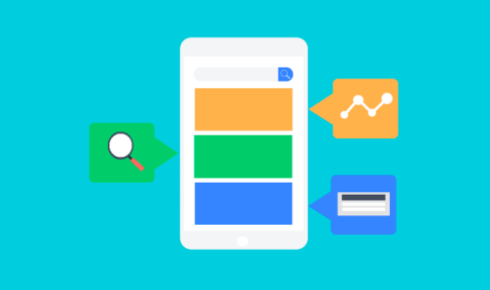
Running high-performing pay-per-click (PPC) campaigns requires more than setting up ads and hoping for results. Even top PPC agencies like Thrive Internet Marketing Agency and WebFx emphasize structured targeting, strategic bidding, and data-driven optimization to maximize return on ad spend (ROAS). This playbook explores actionable strategies with real-world applications you can adapt today.
Smart Audience Targeting
Effective PPC campaigns start with defining and refining your audience. Generic targeting wastes budget, while precise segmentation boosts conversions. Start by building customer personas based on demographics, psychographics, and buying intent. Google Ads and Meta Ads Manager allow layered targeting—such as combining age, location, and in-market audiences.
For example, if you’re promoting eco-friendly products, combine “Green Living Enthusiasts” with geographic regions where sustainable shopping trends are stronger. Steps include:
- Analyze your CRM data to identify high-value customers.
- Build custom segments within ad platforms.
- Test multiple audiences and compare performance via A/B testing.
When Thrive Internet Marketing Agency runs campaigns, they often refine audiences weekly, using remarketing lists for search ads (RLSAs) to capture users already familiar with the brand.
Advanced Keyword Strategies
Keywords are the backbone of search-based PPC, but advanced techniques separate winning campaigns from mediocre ones. Beyond basic match types, leverage long-tail keywords that capture high-intent users. For instance, instead of targeting “running shoes,” go after “best women’s trail running shoes under $100.”
Execution steps:
- Use tools like Google Keyword Planner to uncover variations.
- Group keywords into tightly themed ad groups.
- Apply negative keywords to cut wasteful clicks.
WebFx reports success using a keyword funnel approach—broad keywords for awareness, phrase match for consideration, and exact match for conversions. This structured keyword layering ensures you’re engaging users at every stage of their journey.
Geo-Targeting and Ad Scheduling
Relevance increases dramatically when ads appear at the right place and time. Geo-targeting allows advertisers to zero in on specific zip codes, regions, or even radius targeting around store locations. Ad scheduling complements this by showing ads during high-conversion windows.
Steps to execute:
- Review location and time-of-day data in Google Ads reports.
- Identify top-performing regions and hours.
- Adjust bids higher during peak times or pause ads during low-conversion periods.
For example, a local dental practice might only run ads during office hours, while an e-commerce brand could boost bids late evenings when browsing peaks.
Bidding Strategies That Drive Efficiency
Choosing the right bidding strategy is critical to scaling campaigns. Manual CPC gives control, but automated bidding (like Target CPA or ROAS) uses machine learning to optimize conversions. A hybrid approach often works best—start with manual bidding to gather data, then switch to automation once you have conversion benchmarks.
Execution steps:
- Launch with manual CPC, setting max bids per keyword.
- Monitor conversion data for at least 2–4 weeks.
- Transition to automated bidding (Target CPA or Maximize Conversions) for efficiency.
For instance, a SaaS company might set a $50 target CPA and let Google’s algorithm optimize bids across devices and audiences, freeing up time to focus on creative testing.
Compelling Ad Copy and Extensions
Even with perfect targeting and bidding, poor ad copy kills performance. Focus on clarity, benefits, and urgency. Use dynamic keyword insertion (DKI) to make ads more relevant and test multiple variations through responsive search ads.
Execution steps:
- Highlight a unique selling point (USP) in the headline.
- Use emotional triggers like scarcity (“Limited-Time Offer”).
- Add sitelink, callout, and structured snippet extensions to expand visibility.
For example, an e-commerce store could run a headline like “Shop Designer Handbags – Free 2-Day Shipping” while adding sitelinks to “New Arrivals” and “Clearance.”
Landing Page Optimization
Clicks don’t guarantee conversions—landing pages must seal the deal. Align messaging with ad copy, keep forms short, and emphasize clear calls-to-action (CTAs). Thrive Internet Marketing Agency often tests multiple landing page variations to discover the highest-converting layouts.
Execution steps:
- Ensure ad copy matches landing page headlines.
- Optimize page load speed (under 3 seconds).
- Use A/B testing platforms like Optimizely to refine layouts, CTAs, and visuals.
For example, a B2B firm might test whether a gated ebook download form outperforms a free trial CTA for generating qualified leads.
Continuous Optimization and Reporting
PPC success depends on consistent monitoring and adjustments. Optimization means pausing underperforming keywords, reallocating budget to winners, and testing new creative angles. Both WebFx and Thrive recommend weekly performance reviews and monthly strategic adjustments.
Execution steps:
- Review search term reports to refine targeting.
- Use dashboards (Google Data Studio or Looker) for real-time insights.
- Implement incremental changes—never overhaul campaigns all at once.
For example, a retail brand could discover through reporting that mobile clicks generate 70% of conversions, leading them to allocate more budget to mobile-friendly ads and landing pages.
Scaling Campaigns for Growth
Once campaigns show consistent ROI, scale strategically. Scaling isn’t just raising budgets; it’s expanding reach intelligently. Options include entering new geographic markets, testing new platforms (LinkedIn, TikTok Ads), or increasing remarketing depth.
Execution steps:
- Gradually raise budgets by 10–20% to avoid algorithm shocks.
- Test new audience segments similar to top performers.
- Explore cross-channel campaigns to diversify reach.
For example, a brand succeeding on Google Ads might replicate its winning campaigns on Microsoft Ads, where competition is lower but audience overlap is strong.
Mastering targeting, bidding, and optimization requires constant testing and refinement. By applying these advanced playbooks, marketers can achieve sustainable growth and compete with the top PPC agencies driving industry benchmarks.
